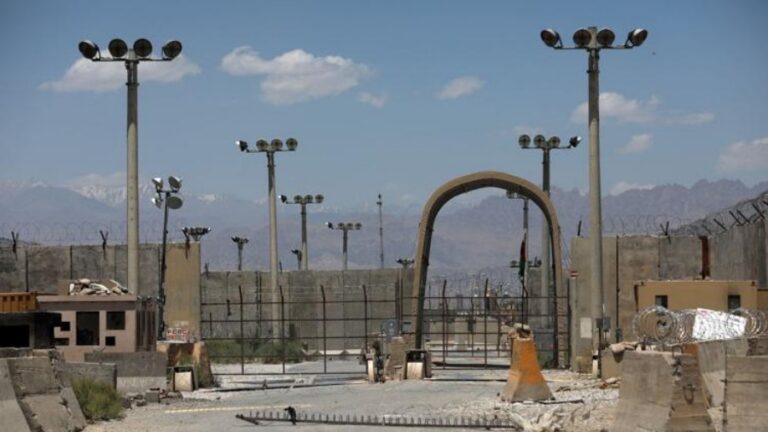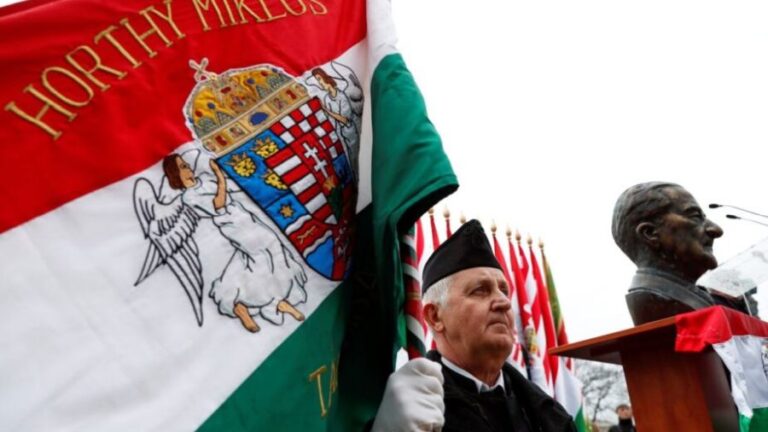Here’s Why Allowing Saudi Women to Drive is Very Dangerous
The move risks provoking the already distraught Wahhabi clergy who fear that the monarchy is breaking its old alliance with them by sidelining the Kingdom’s most conservative religious gatekeepers in its quest for socio-economic modernization.
Hardcore Wahhabis in Saudi Arabia have warned for generations that allowing women to drive would be a very dangerous development for the ultra-fundamentalist Kingdom, arguing that it would somehow degrade society by leading to an epidemic of immorality which would clash with what they believe is the purest way to practice Islam. That’s not why Riyadh’s recent decree granting woman this long-overdue right by next summer is so dangerous, however, as the real reason rests with the unpredictable and possibly violent reaction of the Saudi clergy. Before talking about that, a few words need to be said about the Kingdom’s much-publicized decision to finally allow women to drive.
The Vision 2030 Disruption
This wasn’t about “diverting attention” from the War on Yemen or the perilous situation of the Shiite minority in the Eastern Province like some cynics have alleged, though that might end up being a short-term media-driven consequence which would of course work out to the government’s temporary favor. Instead, Crown Prince Mohammad Bin Salman is actually sincere about reforming the socio-cultural situation in his country in order to enable it to more effectively carry through with his Vision 2030 structural reforms that intend to eventually transition Saudi Arabia to a “normal” non-energy-dependent economy with time. There are still many other reforms which are necessary to implement if the Kingdom’s women are to enjoy the same rights as their counterparts elsewhere in most Muslim-majority countries, to say nothing of the West, but this is still a very powerful step in the direction of increasing female participation in the future workforce.
Understanding this, it’s evident why the most conservative elements of the clergy would be opposed to Vision 2030, as they know that its gradual socio-economic reforms (even if not carried out to their eventual conclusion and still comparatively lagging behind other Muslim countries and the West) will inevitably lead to transformational changes in the country that they believe would contradict their ultra-fundamental interpretation of Islam. In other words, although they won’t say so openly for fear of being detained by the ubiquitous but largely unseen hand of the state security services, it can be presumed that most of these clerics believe that the Crown Prince’s initiative is “haram”, or forbidden by Islamic law (Sharia).

Undermining The Basis Of Saudi Stability
This pretext – that someone, let alone a professed Muslim, is encouraging and/or engaging in prohibited behavior – has been used as the rallying cry for organizing jihadi terrorist wars in “Syraq” and Yemen, so it can reasonably be anticipated that something similar of the sort might be planned against the Saudi monarchy if it can’t control the reactions of the Wahhabi-Takfiri clergy. It’s at this point where it’s relevant to briefly reference Saudi Arabia’s political structure, which is less of an authoritarian dictatorship than it is an authoritarian power tandem between the royals and the clerics. This alliance between the Saud family and the followers of Muhammad ibn Abd al-Wahhab forms the political basis of the Kingdom, with each side delineating certain spheres of internal influence for themselves.
This was a stable enough arrangement (in a relative sense) up until Crown Prince Mohammad Bin Salman decided to push through the socio-economic reforms inherent in his Vision 2030 agenda, as the clerics have come to see this as a de-facto power grab – even a “soft coup”, if one will – by the monarchy over the previously agreed upon domain of the clergy. It’s in view of this why the issue of allowing women to drive is so dangerous for Saudi stability – not because of any misogynist reasons but due to the explosive reaction that it could provoke from the Wahabbi clerics. That’s probably why the Kingdom carried out its recent crackdown against some religious leaders, prudently expecting that the most extreme among them might seek to rally rioters around their cause of Takfiri demagoguery in seeking to overthrow the monarchy once it was announced that women will soon be allowed to drive.
Multipolar Ramifications
There are inarguably some observers who might feel a touch of schadenfreude at Saudi Arabia’s prospective domestic destabilization because of what it’s done in the Mideast and even to its own people (Shiites and women), but the fact remains that any forthcoming monarchy-cleric conflict would affect more than just the Kingdom. Saudi Arabia is one of the world’s top oil suppliers and is endowed with a geostrategic location at the crossroads of Afro-Eurasia. In the past year, the country has also grown incredibly close to both Russia and China, so any Saudi unrest would assuredly harm their long-term multipolar interests as well.
Regarding Russia, Riyadh agreed to an unprecedented OPEC output deal with Moscow and even renewed it after its expiration, is coordinating with the Russian Foreign Ministry over unifying the Syrian “opposition”, signed an unspecified $3.5 billion arms agreement with it this summer, is dispatching its King to Russia for the first time in history, and even plans to hold its first-ever military-technical forum with Russia by the end of the year. Concerning China, the People’s Republic is building an armed drone factory in Saudi Arabia, the King just visited Beijing earlier this year, and both sides signed two separate series of agreements totaling over $130 billion in the past six months alone.
“Balkanizing” The Arabian Peninsula
The most immediate geopolitical consequence of pronounced monarchy-cleric unrest in Saudi Arabia would be the “Balkanization” of the Arabian Peninsula into a collection of emirates, an outcome which mirrors what would happen if the US were ever successful in turning the manufactured Gulf Cold War into a hot one. The UAE, which masterminded the Saudi-Qatari tensions, is unique in the Mideast because it’s essentially a collection of emirates which function as a semi-united entity, and this creative governing model could be replicated all across the territory of a “Balkanized” Kingdom of Saudi Arabia to extend Abu Dhabi’s reach further inland into the peninsula and its rich natural resources.
In addition, the spread of the Emirati system throughout this strategic corner of the Mideast might also create a structural precedent for dividing and ruling other parts of this fractured region at large, particularly in Yemen and “Syraq”.
Therefore, the unleashing of “calculated-controlled chaos” in Saudi Arabia could be part of the US’ plans for geopolitically reengineering a so-called “New Middle East” modelled along the lines of implementing a hybrid Emirati-“Identity Federalized” system.
This can’t happen so long as Saudi Arabia remains unified, ergo the interest that the US and its regional allies have in dismembering it, a scenario which they might try to advance by capitalizing off of the hardcore Wahhabi clerics’ opposition to the Kingdom’s recent decree allowing women to drive.
Concluding Thoughts
It would be difficult to find anyone who isn’t applauding Saudi Arabia’s latest socio-cultural reform in granting women the right to drive, despite the cynicism about it being long overdue and not going far enough. Crown Prince Mohammad Bin Salman is serious about fulfilling the Vision 2030 initiative that he’s staked his legacy on, which therefore requires embarking on transformational changes within the Kingdom which come up against the ultra-hardline Wahhabi dogma preached by part of the clerical half of his country’s power tandem. It was already anticipated that this would result in a strong backlash from that sector, which explains the preemptive crackdown that Riyadh commenced against what it believed would be some of the key figures leading the Takfiri demagoguery against the monarchy.
Ultimately, however, Saudi Arabia will only be saved from the boomerang of Wahhabi destabilization if it can succeed in winning over relatively “moderate” clerics, guaranteeing the support of the military and anti-terrorist special forces, and genuinely securing the backing of the country’s growing youth demographic. This would in turn allow the authorities to isolate the fundamental preachers, effectively deal with their radicalized and militant followers, and count on the support of the masses in a similar manner as President Erdogan did in masterfully employing “democratic security” mechanisms to counteract the failed pro-US coup against him in summer 2016.
Given how “provocative” Riyadh’s latest reform is in the context of the country’s delicate power tandem, especially in terms of how it could easily be interpreted as the monarchy overstepping its agreed-upon boundaries with the clergy in an arguable “soft coup” attempt, it’s plain to see why allowing women to drive is indeed a dangerous step to take, which is why the authorities should be commended for going through with this move. There’s still an ever-present potential for destabilization despite the preemptive crackdown so Saudi Arabia isn’t out of the woods just yet, but any forthcoming anti-government protests led by the Wahhabi clergy would be a red flag indicating that the US has finally commenced a regime change operation against its long-time allies in Riyadh.
By Andrew Korybko
Source: Oriental Review







